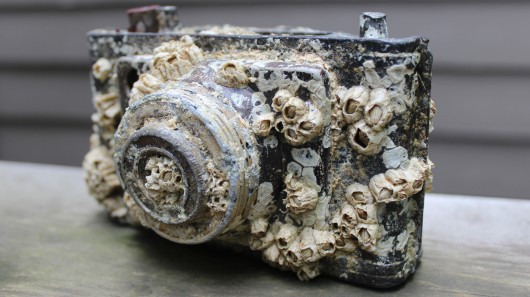
I f you place pretty much any type of
solid material in the ocean, barnacles will firmly attach themselves to it. If
you were to try applying a glue to any of those materials while they were
underwater, however, it likely wouldn't stick. So, what do barnacles know that
we don't? Scientists have recently discovered the answer, and it could lead to
advances in human technologies.
f you place pretty much any type of
solid material in the ocean, barnacles will firmly attach themselves to it. If
you were to try applying a glue to any of those materials while they were
underwater, however, it likely wouldn't stick. So, what do barnacles know that
we don't? Scientists have recently discovered the answer, and it could lead to
advances in human technologies.
For some time now, it's been known that
when free-swimming barnacle larvae decide to secure themselves to a surface
(and subsequently become the crusty barnacles that we know), they do so by
secreting two liquids. It was assumed that these two substances mixed together
to form one bioadhesive, sort of like the two-part epoxies found in hardware
stores.
An international team led by scientists
from Newcastle University in the UK have observed that that isn't the case,
however.
By studying barnacle larvae using
imaging techniques such as 2-photon microscopy, they discovered that the
adhesion process begins with a droplet of one of the liquids – an oil – being
secreted onto the surface to repel and displace water from it. The other
liquid, which is a phosphoprotein adhesive, is then secreted in the same area
and is easily able to stick to the surface.
The researchers now hope that their
newfound knowledge could be used to develop things like medical adhesives,
which could conceivably be used to glue implants in place within the body.
Additionally, now that they better understand barnacles' adhesion process, they
may be able to devise more effective methods of keeping the organisms from
accumulating on the hulls of ships and other areas where they cause problems.
Previous studies have shown that
mussel-inspired adhesives could have similar applications.

 Previous page
Previous page Back to top
Back to top







